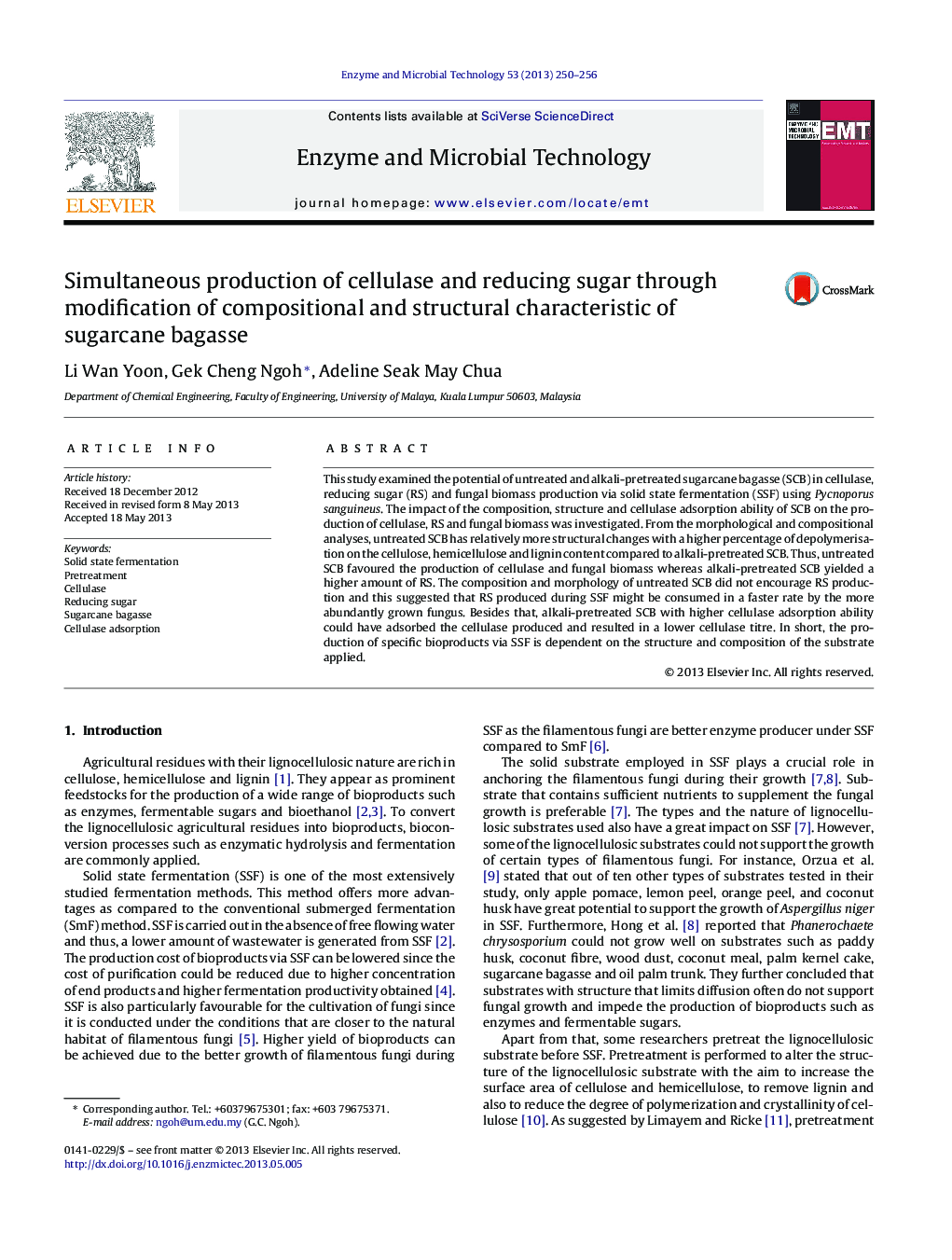| Article ID | Journal | Published Year | Pages | File Type |
|---|---|---|---|---|
| 10233068 | Enzyme and Microbial Technology | 2013 | 7 Pages |
Abstract
This study examined the potential of untreated and alkali-pretreated sugarcane bagasse (SCB) in cellulase, reducing sugar (RS) and fungal biomass production via solid state fermentation (SSF) using Pycnoporus sanguineus. The impact of the composition, structure and cellulase adsorption ability of SCB on the production of cellulase, RS and fungal biomass was investigated. From the morphological and compositional analyses, untreated SCB has relatively more structural changes with a higher percentage of depolymerisation on the cellulose, hemicellulose and lignin content compared to alkali-pretreated SCB. Thus, untreated SCB favoured the production of cellulase and fungal biomass whereas alkali-pretreated SCB yielded a higher amount of RS. The composition and morphology of untreated SCB did not encourage RS production and this suggested that RS produced during SSF might be consumed in a faster rate by the more abundantly grown fungus. Besides that, alkali-pretreated SCB with higher cellulase adsorption ability could have adsorbed the cellulase produced and resulted in a lower cellulase titre. In short, the production of specific bioproducts via SSF is dependent on the structure and composition of the substrate applied.
Keywords
Related Topics
Physical Sciences and Engineering
Chemical Engineering
Bioengineering
Authors
Li Wan Yoon, Gek Cheng Ngoh, Adeline Seak May Chua,
